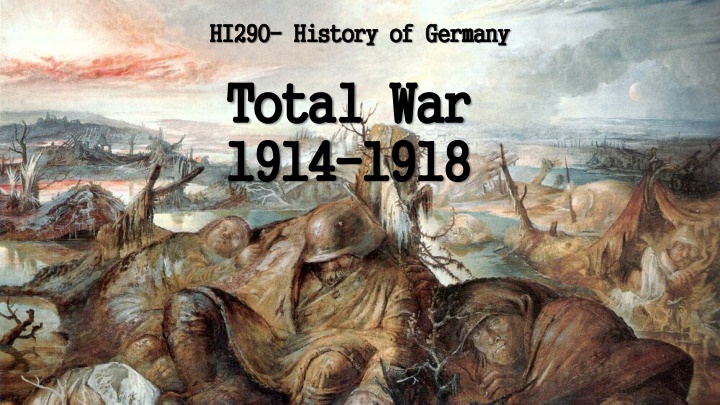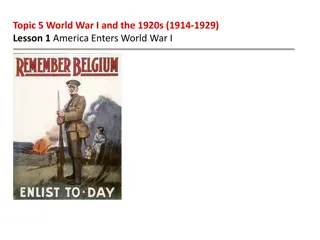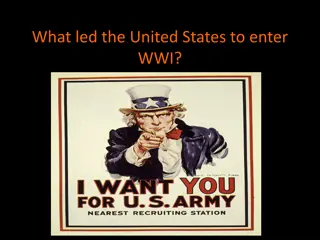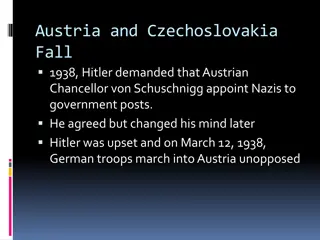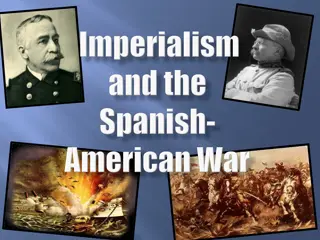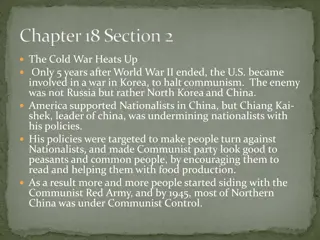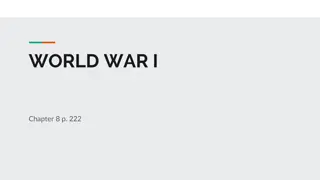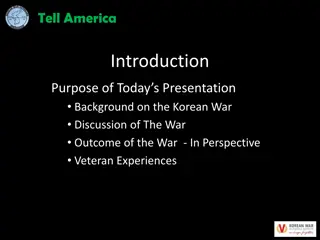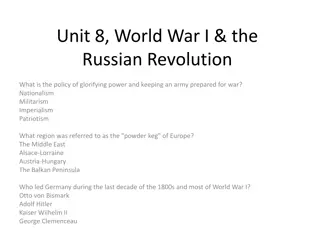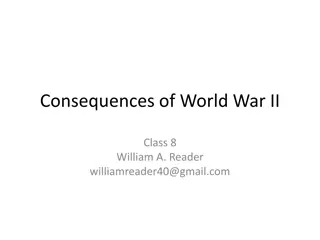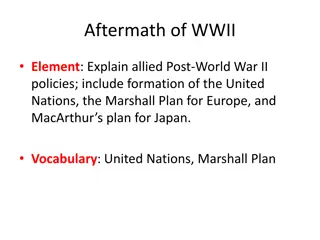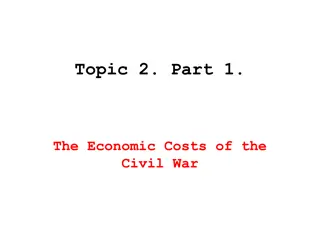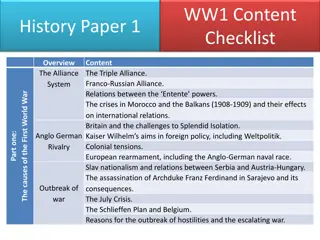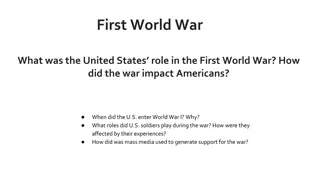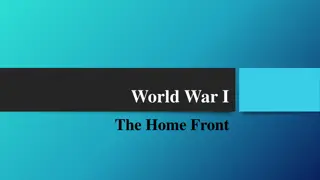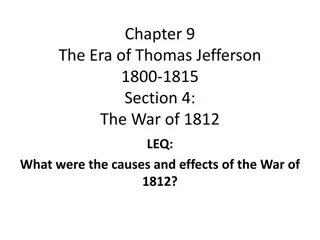Factors Leading to World War I and the Impact of the Schlieffen Plan
The factors that led to World War I include alliances, economic rivalries, and an arms race. The July Crisis in 1914 triggered a series of events leading to the war. The Spirit of 1914 reflected the initial enthusiasm, while the Burgfriede saw political truce. The Schlieffen Plan failed due to unexpected resistance and strategic miscalculations, altering the course of the war.
Download Presentation

Please find below an Image/Link to download the presentation.
The content on the website is provided AS IS for your information and personal use only. It may not be sold, licensed, or shared on other websites without obtaining consent from the author.If you encounter any issues during the download, it is possible that the publisher has removed the file from their server.
You are allowed to download the files provided on this website for personal or commercial use, subject to the condition that they are used lawfully. All files are the property of their respective owners.
The content on the website is provided AS IS for your information and personal use only. It may not be sold, licensed, or shared on other websites without obtaining consent from the author.
E N D
Presentation Transcript
HI290 HI290- - History of Germany History of Germany Total Total War 1914 1914- -1918 War 1918
Factors Factors L Leading eading up to the up to the W War ar Wilhelminian Weltpolitik with its blunders and sense of entitlement System of alliances; Entente Cordiale/Triple Entente (Russia, France, Britain) and Central Powers/Triple Alliances (Austria- Hungary, Germany, Italy) Balkan wars 1912-13 Economic and Imperial rivalries Arms race
The July Crisis The July Crisis 5 July: Kaiser Wilhelm II offers Germany s unconditional support (the blank cheque ) to Austria- Hungary. 28 June: Archduke Franz Ferdinand assassinated at Sarajevo. 23 July: Austria issues her ultimatum to Serbia. 28 July: Austria-Hungary declares war on Serbia. Russia orders partial mobilisation of her armed forces. 30 July: Russia orders general mobilisation. Austria orders general mobilisation. 1 August: Germany declares war on Russia. France orders mobilisation. 2 August: Germany issues an ultimatum to Belgium, demanding to be allowed to move troops through Belgian territory. 3 August: Germany declares war on France. Italy proclaims her neutrality. 4 August: German troops cross the Belgian frontier. Britain declares war on Germany.
The Spirit of 1914 The Spirit of 1914 Enthusiasm and Sympathy for Austria on the Streets of Berlin (August 1, 1914) August 1, 1914, in Berlin by Arthur Kampf (1914)
Burgfriede Burgfriede A political truce called by the parties in the Reichstag for the duration of hostilities. Even the SPD agreed to this and voted for War Credits. The SPD supported the war because: They had been convinced that this was a defensive war against autocratic Russia. Many Socialists were also patriots and were proud of Germany and her achievements. The party leadership hoped to gain political legitimacy through supporting the nation in its hour of need.
The The Schlieffen Schlieffen Plan Plan Alfred von Schlieffen, Chief of the Imperial General Staff, 1891-1906
The Schlieffen Plan Fails The Schlieffen Plan Fails The invasion of Belgium made Germany seem like the aggressor and brought Britain into the War. When the Russians mobilised more quickly than anticipated and invaded East Prussia the Junkers and the Kaiser panicked, leading Moltke to transfer forces to the east and weaken the attack on France. The Germans faced stiffer resistance than anticipated in particular they had not expected to have to fight the British Expeditionary Force (BEF). The War as it was supposed to be fought: German Infantrymen March Singing into the Battle of Langemarck, November 10, 1914 The German advance halted at the First Battle of the Marne (4-10 Sept. 1914) and the Battle of the Aisne (15-18 Sept. 1914). September-December: The race for sea . By December 1914 the front had stagnated into a 400 mile system of trenches running from the Swiss border to the North Sea. And the war as it was fought: digging in to defensive positions, 1914
Trench Warfare Trench Warfare Postcard: Resting in the Trenches,c. 1914 The Battlefield in the Argonne Forest (1916)
The War Beyond the Western Front The War Beyond the Western Front
TheSilent The SilentDictatorship Dictatorship The (OHL, Army Supreme Command) combined command of all German forces, based at Spa in occupied Belgium. Made up of the Prussian/German General Staff, plus the Kaiser s Military Cabinet, senior specialist advisors and representatives of allied Powers. Increasingly took over more and more responsibility over civilian affairs as the demands of TotalWar became clear. This includes politics: the Kaiser a figure-head, real power exercised by the leaders of the OHL, Hindenburg and Ludendorff. 1917: Hindenburg and Ludendorff engineer the dismissal of Bethmann-Hollweg and his replacement as Chancellor Michaelis. Oberste Heeresleitung by Georg Hindenburg and Ludendorff in 1917
The Home Front: The Home Front: Production and Mobilisation Production and Mobilisation 1915: Kreigsrohstoffabteilung (Raw Materials Department, KRA) ensures the acquisition, storage and distribution of materials vital to the war effort. 1915: Bread rationing introduced. 1916: Zentral-Einkaufs-Gesellschaft (Central Purchasing Company) acquisition of goods from neutral countries. 1916: Reichsgetreidstelle (Imperial Gain Office) controlled food supplies and issued ration cards . 1916: Hindenburg Programme Intended to concentrate industry on the production of munitions. Auxiliary Service Law (Hilfsdienstgesetz): All Germans aged between 16 and 50 subject to compulsory war service. Government could conscript workers and decide where they should work. Kreigsamt (Supreme War Office) set up under General Groener to oversee the mobilisation of the German population.
The Home Front: Food The Home Front: Food Shortages Shortages Before 1914 Germany relied on imports to cover 1/3 of its food needs. Major disruption problems and shortages caused by the Allied blockade and agricultural labour shortage. 1915: Food riots in many towns and cities often working class women in the fore-front of these semi-political demonstrations. 1916-17: The TurnipWinter exceptionally cold weather and a poor potato harvest lead to a severe food and fuel crisis. Estimated 750,000 died. Between 1916 and 1917 deaths from hypothermia and malnutrition rose from 121,000 to 293,000. Infant Mortality at 50% by 1918. Propaganda poster. The caption reads: Farmers Do your Duty The Cities are Hungry
The Home Front: The Home Front: Morale and War Morale and War Weariness Weariness Industrial Unrest, 1913-19 Source: G. Layton, From Bismarck to Hitler (Hodder & Stoughton, 1995, p. 68 Year No. of Strikes Working Days Lost 1913 2464 11.76 1915 141 0.04 1917 562 1.86 1919 3719 33.08 Workers on Strike, 1916-18 Source: D. Stevenson, With Our Backs to the Wall (Penguin, 2012), p. 742 Year Number of strikers Number of political strikers 1916 124,000 65,000 1917 651,000 275,000 1918 1,304,000 925,000
Victory in the East? Victory in the East? Source: G. Layton, From Bismarck to Hitler: Germany, 1890-1933
Defeat in the West: Defeat in the West: The 1918 Spring Offensive The 1918 Spring Offensive Source: P. J. Haythornthwaite, The World War One Sourcebook
Dolchstolegende Dolchsto legende (Stab in the Back Myth) (Stab in the Back Myth) Philipp Scheidemann and Matthias Erzberger betray the troops.
Casualties of the War Casualties of the War Seriously wounded Otherwise wounded Prisoners or missing Country Known dead Russia 2,762,064 1,000,000 3,950,000 2,500,000 Germany 1,611,104 1,600,000 2,183,143 772,522 France 1,427,800 700,000 2,344,000 453,500 Austria-Hungary 911,000 850,000 2,150,000 443,000 Great Britain 807,451 617,714 1,441,394 64,907 Serbia 707,343 322,000 28,000 100,000 Italy 507,160 500,000 462,196 1,359,000 Turkey 436,924 107,772 300,000 103,731 Rumania 339,117 200,000 ...... 116,000 Belgium 267,000 40,000 100,000 10,000 United States 107,284 43,000 148,000 4,912 Bulgaria 101,224 300,000 852,339 10,825 Greece 15,000 10,000 30,000 45,000 Portugal 4,000 5,000 12,000 200 Japan 300 ........ 907 3 Total 9,998,771 6,295,512 14,002,039 5,983,600
